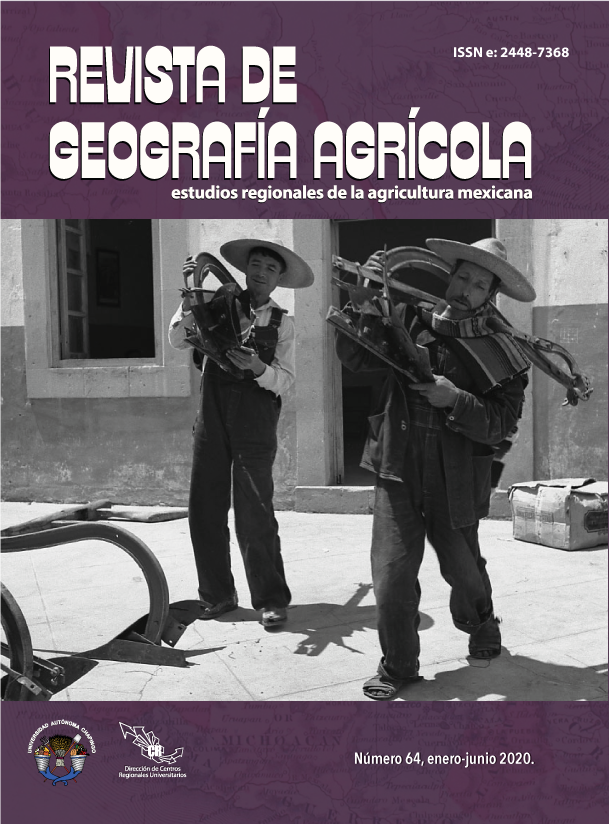Abstract
The current watershed management concept is ambivalent. On the one hand, it was generated as a proposal for a systemic vision of a territory, the watershed, and it addresses complex development issues in that territory. On the other hand, the most widespread application of the concept has been reductionist in nature, since it focuses on one or some aspects of the watershed components and their relationships. Recently, the adjective integrated was added to the term watershed management, which reflects the concern to apply a holistic and systemic vision in the interventions of the physical, biological, social and economic subsystems of the watershed. However, the use of the adjective has been more conceptual than pragmatic, and there has been a lack of discussion about its implications and the challenges associated with its operationalization. This paper proposes the application of Hilbert spaces as a methodological alternative to support the planning and monitoring of watershed management intervention proposals. Hilbert spaces, which have been used in other disciplines, are considered to be an option to support the analysis and management of the watershed as a complex system.
References
Ackoff, R. L. (1997). El arte de resolver problemas. XII reimpresión. Ed. LIMUSA, Noriega Editores, México, D. F.
Calabrese, J. L. (1999). Ampliación de las fronteras del reduccionismo. Deducción y sistemas no lineales. Psicoanálisis APdeBA 21(3):431-453.
Coleman, J. S. (2001). Metateoría: La explicación en la Ciencia Social. Revista Colombiana de Sociología 6(2):193-218.
Corominas, M., & Franquesa, J. (2015). Tennessee Valley Authority: una experiencia de planificación territorial modélica. Ciudad y Entorno 10(28):11-32.
Galván, F. A., Bustamante, A., & Ambriz, J. J. (2015). Construcción de un indicador para la valoración de programas ambientales en la cuenca del valle de
México: Aplicación de metodología. Revue Recherches en Sciences de Gestion-Management Sciences-Ciencias de Gestión 111:161-188.
Garcés, J. A. (2011). Paradigmas del conocimiento y sistemas de gestión de los recursos hídricos: La gestión integrada de cuencas hidrográficas. Revista virtual REDESMA 5(1):29-41.
García, R. (2006). Sistemas complejos. Conceptos, método y fundamentación epistemológica de la investigación interdisciplinaria. Ed. Barcelona. 87 pp.
Gödel, K. (1986). Über formal unentscheidbare Sätze der Principia Mathematica und verwandter Systeme I. En: Kurt Gödel: Collected Works. Feferman, S. (ed.), volume 1. Oxford University Press. German text, parallel English translation. pp. 144–195.
Hilbert, D. (1904). On the foundations of logic and arithmetic Harvard Univ. 129-38.
Hilbert, D. (1927). The Foundations of Mathematics in van Heijenoort 1967:475
LULUCF. (2009). Information and Data on Land Use, Land-Use Change and Forestry (Septiembre de 2009). Canadá.
Luna, E. (2012). Metateoría: IR y los criterios científicos para elegir una teoría. Revista Vacío. Costa Rica Primer semestre. Ética de la gestión.
Munasinghe, M., & Shearer, W. (1995). Defining and Measuring Sustainability-The Biogeophysical Foundations. Washington, DC. The United Nations University and The World Bank, ISBN 0-8213-3134-5
Muñoz, J. M. (2014). Totalidad y complejidad. Crítica de la ciencia reduccionista. UNAM. Centro de Investigación interdisciplinario en Ciencias y humanidades. 630 pp.
ONU. (2014). Indicators to Assess Watershed Health in British Columbia. Draft Discussion Paper. Discussion Paper Prepared by the Fraser Basin Council.
Pacheco, J. F., & Contreras, E. (2008). Manual metodológico de evaluación multicriterio para programas y proyectos. Instituto Latinoamericano y del Caribe de Planificación Económica y Social (ILPES). Santiago de Chile, julio de 2008.
Payá, R. A. (2008). Estructura y Topología del Espacio Euclídeo. Universidad de Granada. Departamento de Análisis Matemático Facultad de Ciencias. Cap. 10, espacios de Hilbert.
Ratcliffe, J., & Stubbs, M. (1996). Urban planning and real estate development. University College London Gower Street. ISBN 0-203-2146-3 Master e-book
Rojas, J. H., y Pérez, M. A., Malheiros, T. F., Madera, C. A., Guimarães M., & Dos Santos, R. (2013). Análisis comparativo de modelos e instrumentos de gestión
integrada del recurso hídrico en Suramérica: los casos de Brasil y Colombia. Revista Ambiente & Agua - An Interdisciplinary Journal of Applied Science 8(1):73-91.
Russell, R. J., Stoeger, W. R., & Coyne, G. V. (2004). Física, filosofía y teología, una búsqueda en común. EDAMEX. 464 p.
Uribarri, I. Z. (2014). Crítica de la razón pura, de Immanuel Kant, en la traducción de José del Perojo (1883). Alicante: Biblioteca Virtual Miguel de Cervantes.
Biblioteca de Traducciones Españolas. (Publicación en línea, disponible en internet en el sitio http://www.cervantesvirtual.com/nd/ark:/59851/bmcbc5t5 [con acceso el 12-3-2017]).
Velásquez, A. (2007). La organización, el sistema y su dinámica: una versión desde Niklas Luhmann. Revista Escuela de Administración de Negocios 61:129-156.
Villalpando, J. M. (2008). Manual moderno de lógica. Editorial Porrúa, México, D. F. 416 p.
Zela, A. (2013). Lógicas de primer y segundo orden. Cuadrantephi 26-27:1-15

This work is licensed under a Creative Commons Attribution-NonCommercial 4.0 International License.
Copyright (c) 2020 Revista de Geografía Agrícola




